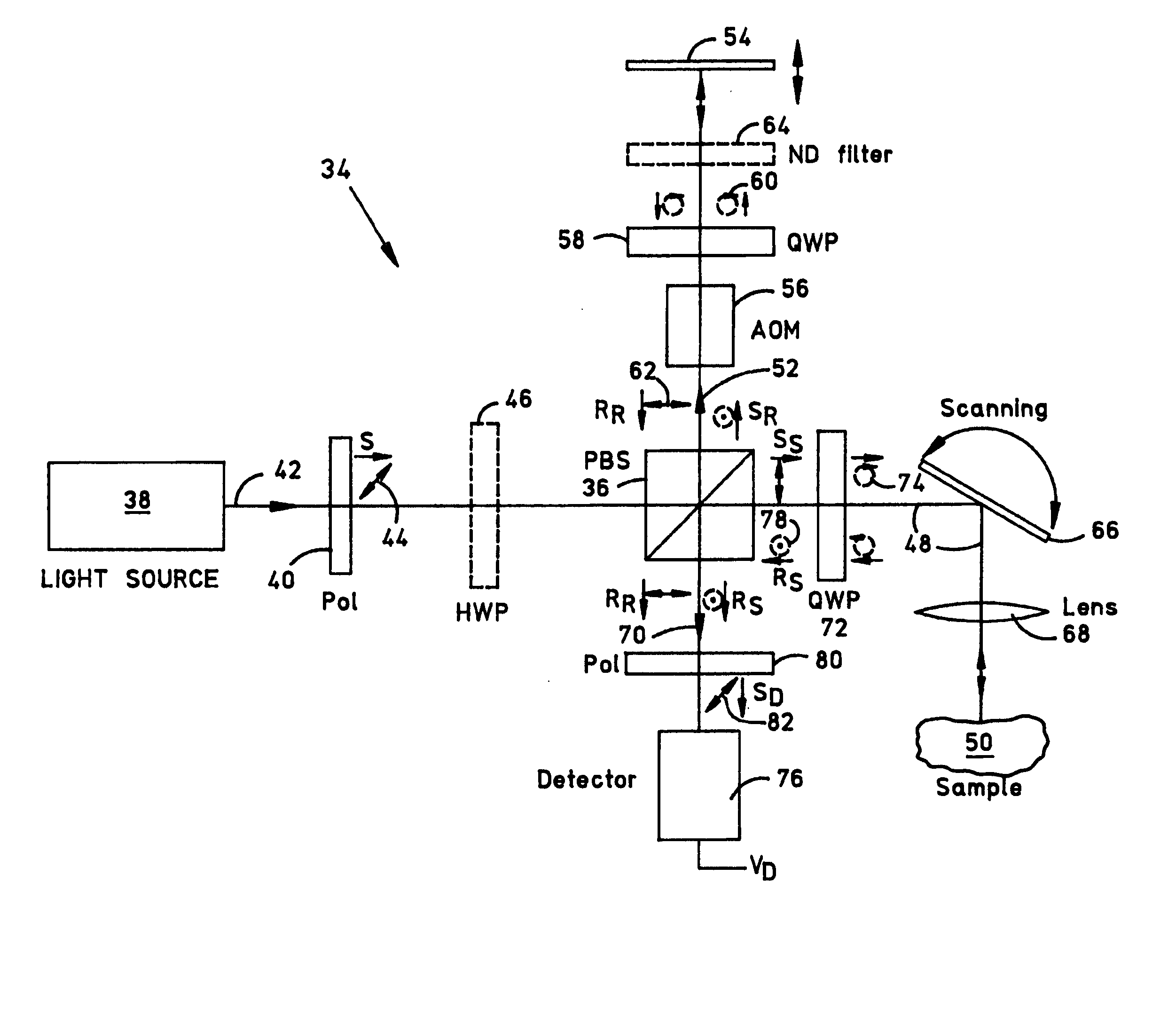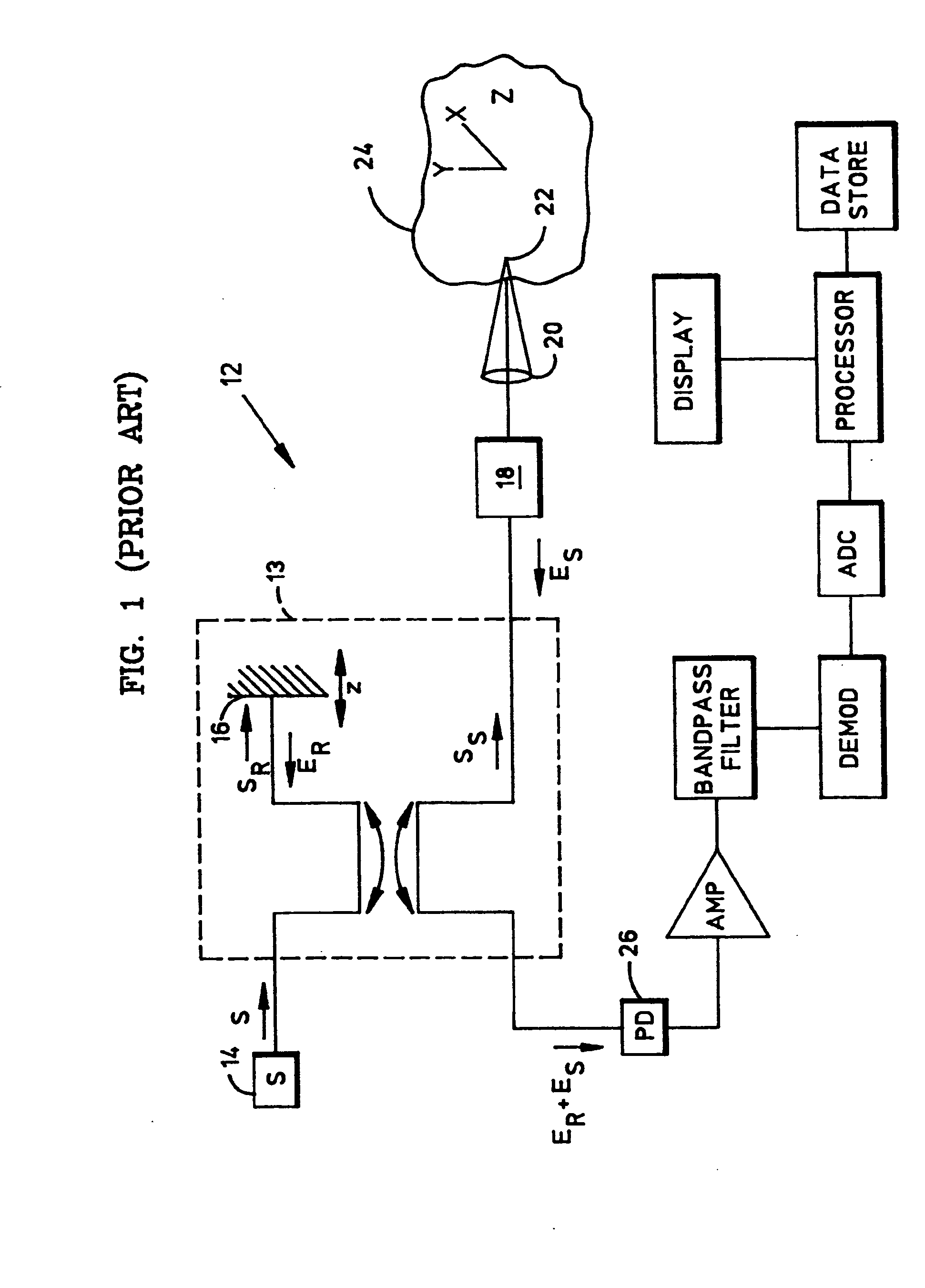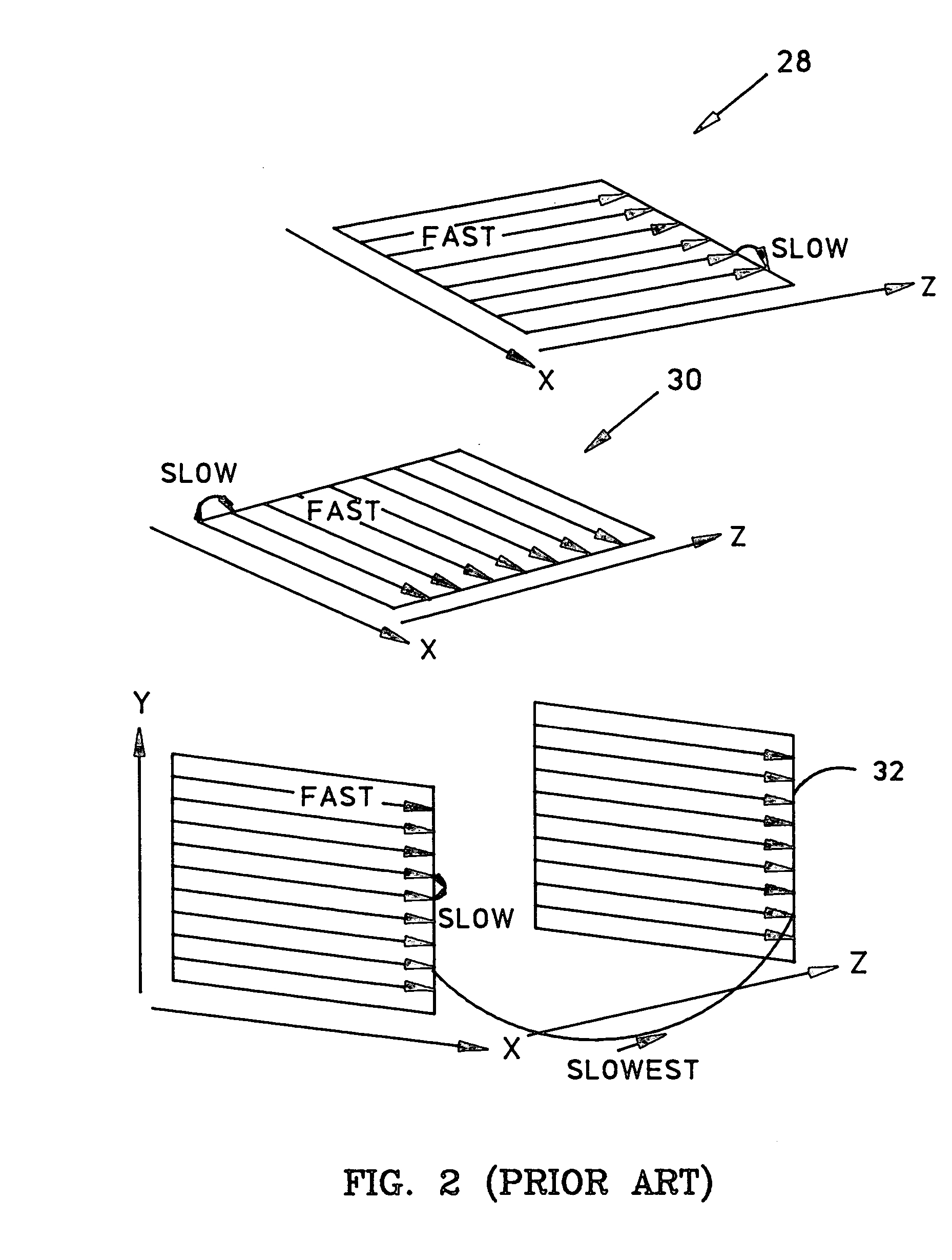Efficient optical coherence tomography (OCT) system and method for rapid imaging in three dimensions
a three-dimensional imaging and optical coherence tomography technology, applied in the field of optical coherence tomography (oct) systems for three-dimensional (3d) imaging, can solve the problems of reducing affecting the detection accuracy of the image, so as to improve the detection accuracy and reduce the motion artifacts. , the effect of optimizing the detector signal-to-noise ratio
- Summary
- Abstract
- Description
- Claims
- Application Information
AI Technical Summary
Benefits of technology
Problems solved by technology
Method used
Image
Examples
embodiment 34
[0043]FIG. 3 is a functional block diagram illustrating a Michelson embodiment 34 of the OCT system of this invention showing one example of the signal polarization states necessary to operate the detector in a noise-optimized regime. System 34 uses the polarization properties of the optical signals to avoid wasting source power. The usual non-polarizing beam splitter of the Michelson interferometer is replaced by a polarizing beam splitter (PBS) 36, which reflects optical signals having a vertically-oriented linear polarization state and transmits optical signals having a horizontally-oriented linear polarization state. The source 38 is linearly polarized by, for example, using a polarized light emitting source (not shown) or by adding a linear polarizer 40 disposed as shown. When a partly polarized light source (e.g. one of many suitable types of super luminescent diodes) is used instead of source 38, polarizer 40 should be oriented to transmit maximum power so that both source 38...
embodiment 134
[0053]FIG. 4 is a functional block diagram illustrating a Mach-Zehnder embodiment 134 of the OCT system of FIG. 3 that may be appreciated with reference to the above description of FIG. 3, wherein the descriptive numerals for items having like functions to those disclosed in FIG. 3 are incremented by 100 so that, for example, the operation of the three PBSs 136a, 136b and 136c together may be fully appreciated with reference to the above description of PBS 36 shown in FIG. 3. The working principle of system 134 is essentially similar to that of system 34 discussed above. The function of QWP 58 in system 34 (through which pass both reference signals SR and RR) is assumed in system 134 by the HWP 158, through which passes only the reflected reference signal portion RR alone. The z-axis positioning function of reference reflector 54 is assumed by the path delay reflector 154, which is disposed to move in either direction along the z-axis as shown by the arrows. The functions of HWP 46 ...
PUM
| Property | Measurement | Unit |
|---|---|---|
| time | aaaaa | aaaaa |
| wavelength range | aaaaa | aaaaa |
| wavelength range | aaaaa | aaaaa |
Abstract
Description
Claims
Application Information
 Login to View More
Login to View More - R&D
- Intellectual Property
- Life Sciences
- Materials
- Tech Scout
- Unparalleled Data Quality
- Higher Quality Content
- 60% Fewer Hallucinations
Browse by: Latest US Patents, China's latest patents, Technical Efficacy Thesaurus, Application Domain, Technology Topic, Popular Technical Reports.
© 2025 PatSnap. All rights reserved.Legal|Privacy policy|Modern Slavery Act Transparency Statement|Sitemap|About US| Contact US: help@patsnap.com



